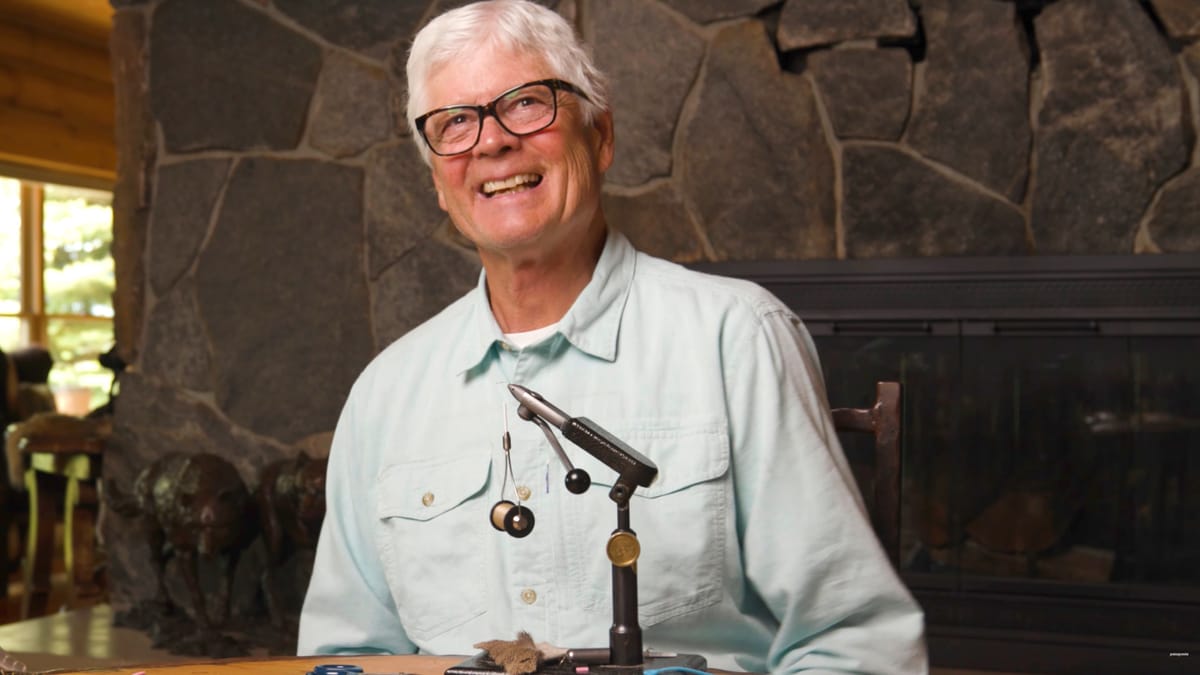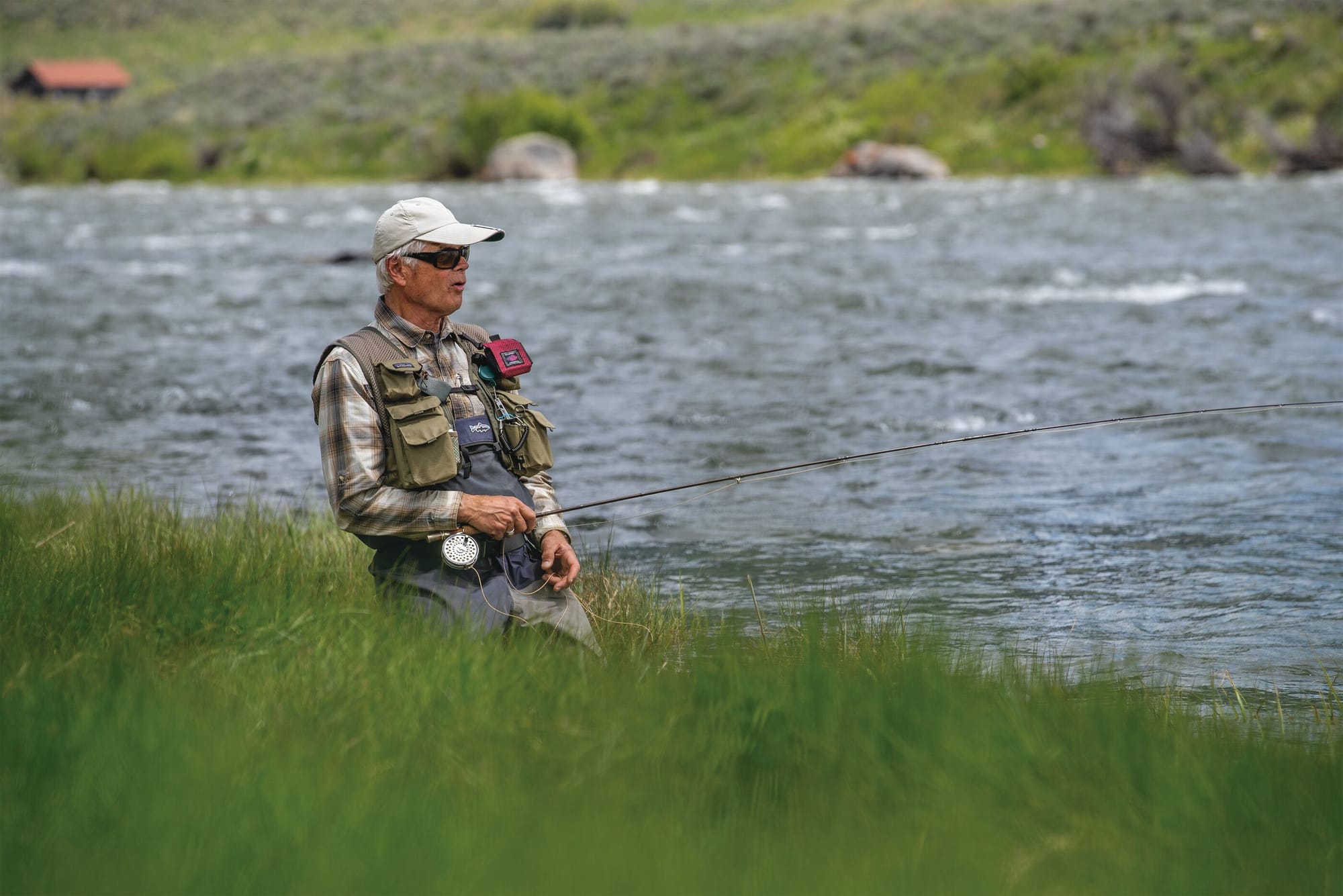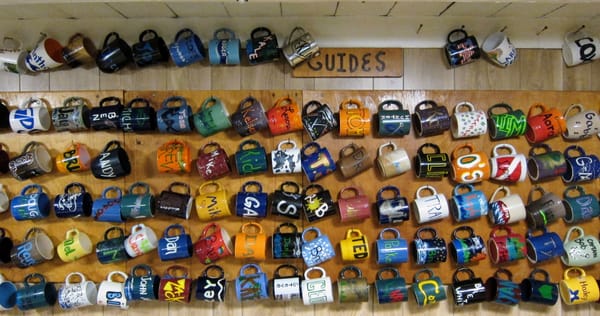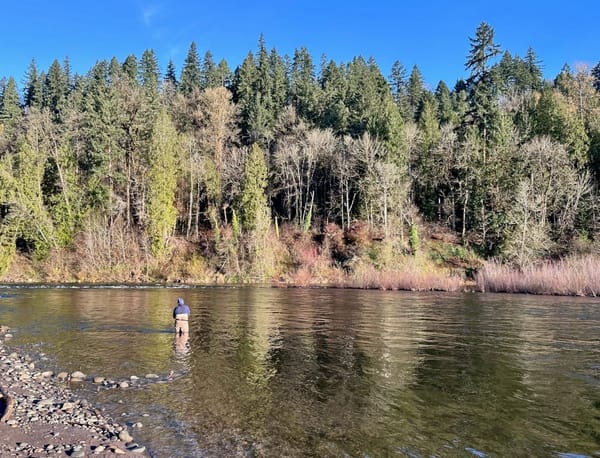Tie your own flies: Six tips to start fly tying from Craig Mathews
Blue Ribbon Flies co-founder and co-author of Pheasant Tail Simplicity offers six tips for beginning fly tiers to get the ball rolling behind the vise.

I’m not going to lie. It bums me out when beginners show up to class with an assortment of flies they’ve bought off Amazon. The enthusiasm is great, don't get me wrong. But the flies aren't it. They’re gaudy, synthetic creations that are unfit for our chill practice pond. Sure, they’ll fish. But they’ll fall apart quickly, and don’t do beginning anglers any favors.
If there’s anything Pheasant Tail Simplicity teaches, it’s unlocking the pleasure of tying and fishing your own flies doesn’t have to be difficult.
Tying your own flies doesn’t have to be complicated
Start simple, be patient, and practice. Those are the keys to tying your own flies. When we sat down with Craig Mathews, founder of Blue Ribbon Flies and author of ten books about fly fishing in and around Yellowstone and beyond including co-authoring the latest, Pheasant Tail Simplicity, we couldn't let him go without asking for a contribution to our Six Tips To Start... series, this time for beginning fly tiers.
In case it isn't clear from the list, tour local fly shop is your anchor in all this. It's the place to find the right materials, to get a hands-on demo on how to use them, and to expand your horizons once you get the basics down. So skip the Amazon assortment. Instead focus on one or two you know will work, and are crafted closer to home.
Six tips to start fly tying from Craig Mathews
Here are six tips from Craig for beginning fly tiers:
Tip 1: Anyone can do it
Don’t worry if you don’t think you have the small motor skills to deal with all the fiddly bits and intricate steps that tying a fly seems to take. You can go step-by-step and practice them one at a time. Maintaining thread tension, tying in a bundle of materials, flaring deer hair, and whip-finishing are all individual skills that take a little practice, but they with a little practice you’ll be able to learn them quickly.
“As a young kid, I could not build a model airplane," Craig says. "I just couldn't deal—I couldn't do it. I still can't pound a nail. But I can tie a fly. And if I can do it, anybody can do it. Even just affixing your thread to a hook shank, everybody thinks you have to tie all these special knots, when you simply whip on the thread."
As a young kid, I could not build a model airplane...I still can't pound a nail. But I can tie a fly. If I can do it, anybody can do it.
- Craig Mathews
Tip 2: Tie flies you’re going to fish
At least half the satisfaction of fly tying comes in fishing the flies you tie. So start with flies you’ll use in your home waters, in the style of fishing you prefer. If that’s for bluegill in the local pond, that’s fine. But tie for function first, not show. You’ll feel satisfaction and magic of catching fish on your own flies.
“My first flies that I tied, they were using seagull feathers I found," Craig says. "We had a summer home in north central Michigan on a lake called Silver Lake by Hart, Michigan. And a couple of older fishermen were out fishing little foam poppers for bluegills and bass. And finally, this little chubby kid—me—waded out. And I had a cane rod that was my grandfather's, and I'm trying to cast. And all of a sudden, these two guys kind of adopt me. They see me struggling.
"And the next thing you know, a couple days later, I'm sitting in their cabin, and they're showing me how to tie very simple flies with foam and feather. But they caught bluegills, and they caught bass. And I was so doggone proud of that. And I still have my first fly I tied when I was six years old with a seagull feather. I laugh at it, but doggone it, it caught a bluegill one night, and that's what hooked me.
Watch Craig Mathews tie the X-Caddis, part of the series of instructional videos Patagonia created alongside Pheasant Tail Simplicity
Tip 3: Avoid beginner all-in-one kits
It can be tempting to pull an all-in-one beginner’s kit from the rack. One with a hundred different materials, promising all you need to tie a dozen different patterns. But those kits offer inferior quality, and the fly selection won’t last long enough to sustain your attention. Avoid these kids of kits, unless they have the blessing of your local fly shop, or they’re put together custom by the shop itself.
Craig has advice here, too: “Don't buy a beginner's kit, unless you buy it from a fly shop that you know is reputable. Go in and say, ”Hey, I want to learn how to tie flies. Show me what I need.” And most of them, because there's always a fly tier on staff, will take the time and show you inexpensive but effective tools. Fortunately now, there's cheap vises. You can buy a vise now for 20 bucks, and it'll last for a long time, and then you can graduate into a Regal, or a Dyna King vise down the road.”
”But get yourself a decent pair of scissors, and try to learn to whip finish, because then you don't need head cement: head cement is highly toxic. A whip finisher, you can get them for $2.99. Scissors, find a good but inexpensive pair of scissors Hackle pliers, you can get those little electric clips for $1.50 at Walmart in their electrician's supply area.”
Tip 4: You don’t need expensive feathers
Feather styles, arrangements, colors, and grades can also be daunting for a beginner to understand. It can seem like there are an awful lot of options to consider. But flies in the book only use two types of feathers: pheasant tail fibers and Hungarian partridge.
”You don't need a $600 cape or a $100 neck to tie flies," Craig says. "That is a big drawback to a lot of beginners. That's where most of our dry flies come in. We don't utilize hackle. That's where roadkill comes in.
"And pheasant tails. I love to give pheasant tails away. I have hundreds of them. And I give them to young people to show how simple it can be, and how easy and effective the fly patterns are that they can tie coming off their own vise."
Tip 5: Find a fly shop with active fly-tiers to show you the way
One mark of a good fly shop is that they're tying and selling their own patterns created for the waters nearby. And they probably have specialized programming to help their customers learn to tie flies.
Whether it’s a repeating “Friday night flies” or “Tying Table” meetup, or even featured fly tiers visiting, there are plenty of ways to get hands-on education and experience. The best resource is your local fly shop. It's the place to find answers if you're stuck, and work on specialized techniques.
“If you're a beginning fly tier, and you walk into a shop and say, ’Would you show me how to tie a fly?’ Someone will come," Craig says. "We used to have six fly tiers, up to 12 fly tiers going, all the time, 24/7 at times. Because there's nothing like showing a young person or a beginner that first fly. Nine out of 10 of them are going to give it a shot, and then you know you've got a fly tier. And you've got a customer, if you're a fly-fishing business. And a good customer. Not only will they buy the fly tying equipment, but they're going to buy a pair of waders and a rod and reel from you down the line. And that's how we initially built our business."
Tip 6: Practice, practice, practice
You might not be happy with how your flies turn out at first. The proportions might be out of whack. The thread work won’t be as tidy as in the pictures.. And the whip finish might be wonky. That’s OK. You can always break the flies down and re-use the hooks and beads later if you’re not happy with how they look. But whether your fly is a showpiece or a little sloppy, the fish probably won’t mind. The key to tying flies more consistently, and faster, is practicing the individual skills that make up each pattern, and continuing to practice to build your muscle memory. Eventually you’ll be able to tie them while you in front of the TV, while you listen to your favorite audiobook or podcast, or even in that Zoom training for work you’ve been putting off (don’t tell). The key is putting in the time at the vise.
”If you tie a fly, great," Craig says. "But you know what? The next day, tie six more, and the next day, tie six more. And then it becomes so easy. Practice.”
From tenkara-wielding biker gangs to roadkill feather ghouls to Yvon Chouinard's "stroke": A conversation with fly angling icon Craig Mathews never disappoints. Hear how Pheasant Tail Simplicity is creating a new generation of fly tiers, observation as the key to angling, and much, much more.
Join in the Pheasant Tail Simplicity fun
We're hosting a virtual meetup to discuss Pheasant Tail Simplicity on November 2nd, and a series of in-person tying meetups to work through some of the flies in the book in Portland throughout November. We hope you can join us for one or all of the upcoming events. 📆
Pick up your copy of the book, or maybe you can get lucky and win a giveaway copy at our virtual discussion.
𓆟 𓆝 𓆟





